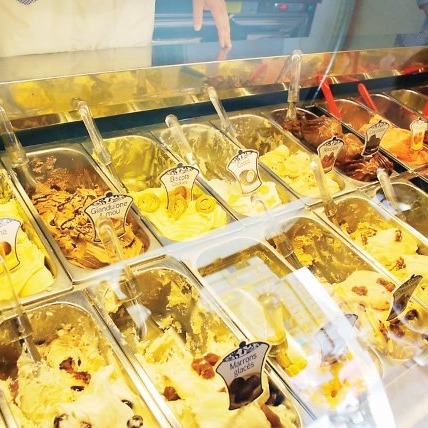SA
The survival guide to eating kosher while on holiday
When we think of Rome, we are transported back. Not to the Trevi Fountain, the Colosseum, or the Pantheon. But to Ba’Ghetto Milky.

ANTONY AND JUSTINE SEEFF
Ba’Ghetto Milky is an unassuming kosher restaurant in the Jewish quarter of Rome which makes the most unbelievable pizza we’ve ever tasted. The base, which let out a crunch that was music to our ears, was caressed by the Gal Gadot of cheese, together with toppings that were fresh yet fantastic, simple yet scrumptious.
It was the kind of pizza that ruins every other pizza you taste afterwards. And, don’t get us started on the deep-fried Jerusalem artichoke.
If you ask us, that’s what holidays are all about. Of course, there are other great perks that come with international travel like site-seeing, learning new cultures, and exploring different cities, but it’s the eating that stands out for us. It’s the sampling of local cuisines – whether it be pad thai in Bangkok or paella in Barcelona – which really gives you a feel for your destination and adds flavour to your journey.
But how can you unlock that gastronomic travel experience if you’re kosher?
It really comes down to two options – you can either pack a few extra kilos of some trustworthy tinned tuna together with the requisite amount of Provita and mix it in with your tears as you cry through every meal in your hotel room.
Or you can put in a bit of effort, and follow a few simple tips to make sure that you’ll be able to eat your way through whichever destination you choose – like a mouse munching through a giant wheel of (kosher) Swiss cheese.
First, you have to research your destination carefully. Some cities, like New York or Paris, are packed with kosher restaurants just waiting with doors-wide-open for hungry travellers. Others have a handful of options that you can make work (we’ll touch on them below).
But then there’s a third category of cities, the kosher abysses, where you’ll struggle to eat kosher, with no kosher restaurants, no Chabad (if you can believe it!), and no kosher supermarkets or local kosher products.
A bit of online research and asking around should point you in the right direction for your next trip.
Second, plan ahead before you go. This includes chatting to friends about their experiences, and spending as much time as you can doing research online. Google Translate will become your best friend in this endeavour. It’s also worth calling local rabbis and Chabad centres to get more information. You’re basically seeking to find out about the local kosher restaurants and supermarkets – where they are, what hechsher they have, and importantly, whether they’re still open. Unfortunately, kosher restaurants aren’t known for sticking around too long.
It’s also helpful to find out what local food you can eat. For example, milk in some countries is sometimes a problem from a kashrut perspective.
Remember that most countries won’t have a kosher hechsher on products, so try to download any lists of kosher products that you can find before you go. It’s a lot easier to download these and keep them on your phone than it is to try find them on the go while connecting to some dodgy free WiFi.
Now that the pre-planning is over and you’ve reached your destination, hop in a taxi and go straight to the nearest Chabad, shul, or kosher establishment.
You can find out only so much online. Nothing beats chatting to the locals, and getting a feel for the lay of the land from their perspective.
They can show you where to eat, where to buy supplies, and tell you about what local products you can get away with. They can also help you translate some of those kosher lists you downloaded online but couldn’t quite make sense of.
If you’re stranded and hungry, you can always resort to technology, and fire up an app like Kosher Near Me to help you find your way to the closest mashgiach.
Our last piece of advice is to learn the halacha, and eat like a king wherever you are! Some products are acceptable anywhere in the world and, with a bit of knowledge and some fresh pots and pans, you can eat gourmet meals on a cruise, in a hotel, or restaurant wherever you may find yourself.
Generally speaking, fruit, vegetables, and fish are always safe, and double-wrapping a kosher fish in tin-foil together with some lemon and fresh vegetables is a delicious option. However, please check with your local rabbinic authority before being so brazen. So, add those pots, pans, and spices (to give your meals an extra kick) together with your copy of Shulchan Aruch (Code of Jewish Law) to your packing list, and get ready to eat in style.
And, if you have some extra space in your suitcase, you can include a disposable braai together with some kosher meat, and cook up some boeries to remind you of home. This technique is actually used by a cousin of ours who often travels to Shanghai for work.
So, with a bit of research and the right planning, there’s nothing stopping you from enjoying your kosher cuisine wherever your next adventure takes you.
And please don’t forget, when you go to Rome, you have to try the pizza from Ba’Ghetto Milky.